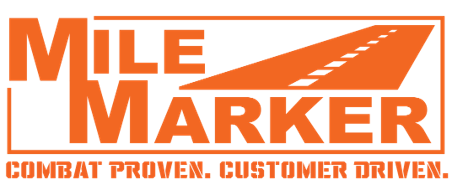Drive Efficiency and Quality Through Methodology
June 27, 2021
Your manufacturing, services, or retail operations organization can drive better consistency, quality, profitability, through discipline and proven methods such as LEAN, 5S, Six Sigma and other Operational Excellence approaches.
What is Six Sigma and how is it used in manufacturing?
 As technology and business strategies have evolved over the years, manufacturing processes have developed that focus on increasing efficiency. From the growth of the United States economy and dominance of the traditional assembly line system in the early 20th century, the manufacturing industry has come a long way. One of the dominant concepts for process improvement is Six Sigma.
As technology and business strategies have evolved over the years, manufacturing processes have developed that focus on increasing efficiency. From the growth of the United States economy and dominance of the traditional assembly line system in the early 20th century, the manufacturing industry has come a long way. One of the dominant concepts for process improvement is Six Sigma.
Six Sigma is a set of techniques and tools that seeks to improve the quality of the output of a process by identifying and removing the causes of defects and minimizing variability in manufacturing.
History of Six Sigma
The concept was developed in 1986 by engineer Bill Smith who worked at Motorola. The concept was developed when he realized a correlation between decreased costs of production and an increase in quality of products. The term “Six Sigma” came from the statistical concepts applied to manufacturing, based on the sigma rating associated with the percentage of defect-free products. The goal of a Six Sigma process is 99.99966% defect-free; or has 3.4 defective units per million. Motorola reported that Six Sigma saved them over $17 billion in its first two decades of deployment. It was also adopted by Jack Welch, the dynamic late CEO of General Electric, in 1995.
At this time, more than half of the Fortune 500 companies have adopted Six Sigma in their organization’s manufacturing processes.
Implementation of Six Sigma
 In order to succeed in implementing Six Sigma in your manufacturing processes, it has to be fully integrated into your business strategy and practices and be at the core of management’s vision for the company. The most important resource in deploying Six Sigma is having your employees trained to fully understand it’s methodology and processes. There are a variety of quality management tools and methods that can be utilized to optimize your manufacturing processes. Six Sigma projects typically follows the DMAIC methodology.
In order to succeed in implementing Six Sigma in your manufacturing processes, it has to be fully integrated into your business strategy and practices and be at the core of management’s vision for the company. The most important resource in deploying Six Sigma is having your employees trained to fully understand it’s methodology and processes. There are a variety of quality management tools and methods that can be utilized to optimize your manufacturing processes. Six Sigma projects typically follows the DMAIC methodology.
The goal of a Six Sigma process is 99.99966% defect-free; or has 3.4 defective units per million.
DMAIC
The DMAIC project methodology has five phases:
Define: this step clearly articulates the business problem, goal, potential resources, project scope and high-level timeline.
Measure: this step is based around data collection, which aims to establish performance metrics that can be compared to your results at the conclusion of the project.
Analyze: this purpose of this step is to identify, validate, and select root cause of elimination. There are a variety of ways to do this — with tools like a fishbone diagram, or other analysis tools that range from simple to complex to identify root causes.
Improve: in this step, solutions are identified, tested and implemented in order to prevent process problems.
Control: to sustain the progress made through solutions, this step monitors improvements to ensure continued and sustainable success.
Use of LEAN Manufacturing
At QORVAL, our proven SME’s (subject matter experts) provide a wealth of experience and expertise to help companies of all sizes achieve the key core values of business — profit, growth, integrity and fun.
We have a multitude of services and solutions and create a customized plan to help your business reach its goals, for a variety of industries in different regions. One of the areas of expertise our team has is in the use of LEAN manufacturing.
What is Lean (LEAN) Manufacturing?
If you work in a manufacturing industry, you have probably heard of Lean. If you aren’t sure if Lean is right for you, you might be asking yourself what exactly it is and what the benefits are. The process of Lean manufacturing originated from the Toyota Production System — and in their case, they grew from a small company to one of the world’s largest automotive manufacturers, which is a testament to its success. The system has now been adopted by many other companies in Japan and gained popularity globally over the years. The general concept of Lean is a production system that minimizes waste (“muda” in Japanese) without sacrificing productivity.
So what exactly is waste? In this methodology, waste is considered anything that does not add value from the customers perspective. Waste is categorized into seven parts: transport, inventory, motion, waiting, over-processing, overproduction, and defects. All of these have a direct impact on your costs, and don’t add value — so they create more costs for the customer in the end with nothing added to the product or service you provide.
 Starting Small
Starting Small
The 5S methodology is a good place to begin — to get one’s proverbial house in order.
This simple methodology involves sorting, setting in order, shining and cleaning up, standardization, and sustainability.
Benefits of Lean
The overall goals of Lean are as follows — improving quality, eliminating waste, reducing time, and reducing total costs. All of these things are beneficial to any business, and there are many additional benefits to using Lean manufacturing. Through case studies and success stories of companies that have implemented the system, it has show less defects, lower levels of inventory, improved delivery, greater customer satisfaction, better supplier relations, and more.
Implementation
Implementing Lean is not a one-size-fits-all process. There is not a simple road map you can follow, it involves an in-depth analysis of your company’s procedures, and developing an implementation plan that will transform it to a more efficient, productive system. You can’t simply make the decision to reduce waste.
It has to be part of a transformation and culture shift.
There are two main pillars of Lean, just in time (JIT) which primarily focusing on reducing flow times within production as well as response times to and from suppliers and customers; and Jidoka which highlights the cause of problems leading to improvement of quality and reduction of defects.
Additionally, the five principles of Lean are:
- To specify value as seen by the customer
- Identify and create value streams
- Make the value flow from raw material to the customer
- Pull production not push
- Strive for perfection
Without knowledge and experience in Lean, it can be extremely difficult to figure out how to transform your manufacturing processes. And, of course, Lean can be applied to other industries and sectors, such as construction and field services and even in the public sector, to reduce costs and improve responsiveness and service quality.
 Get A Fresh Set Of Eyes: Hire The Right Experts
Get A Fresh Set Of Eyes: Hire The Right Experts
To successfully implement Six Sigma in your manufacturing processes, you need someone with expertise in the methodology to assist you. Our experts in manufacturing systems, continuous improvement, LEAN, 5S/6S and Six Sigma can help your business profit and grow.
We have several LEAN/5S/6Sigma/Operational Excellence/Leadership experts with decades of manufacturing and services experience:



































































































































































































